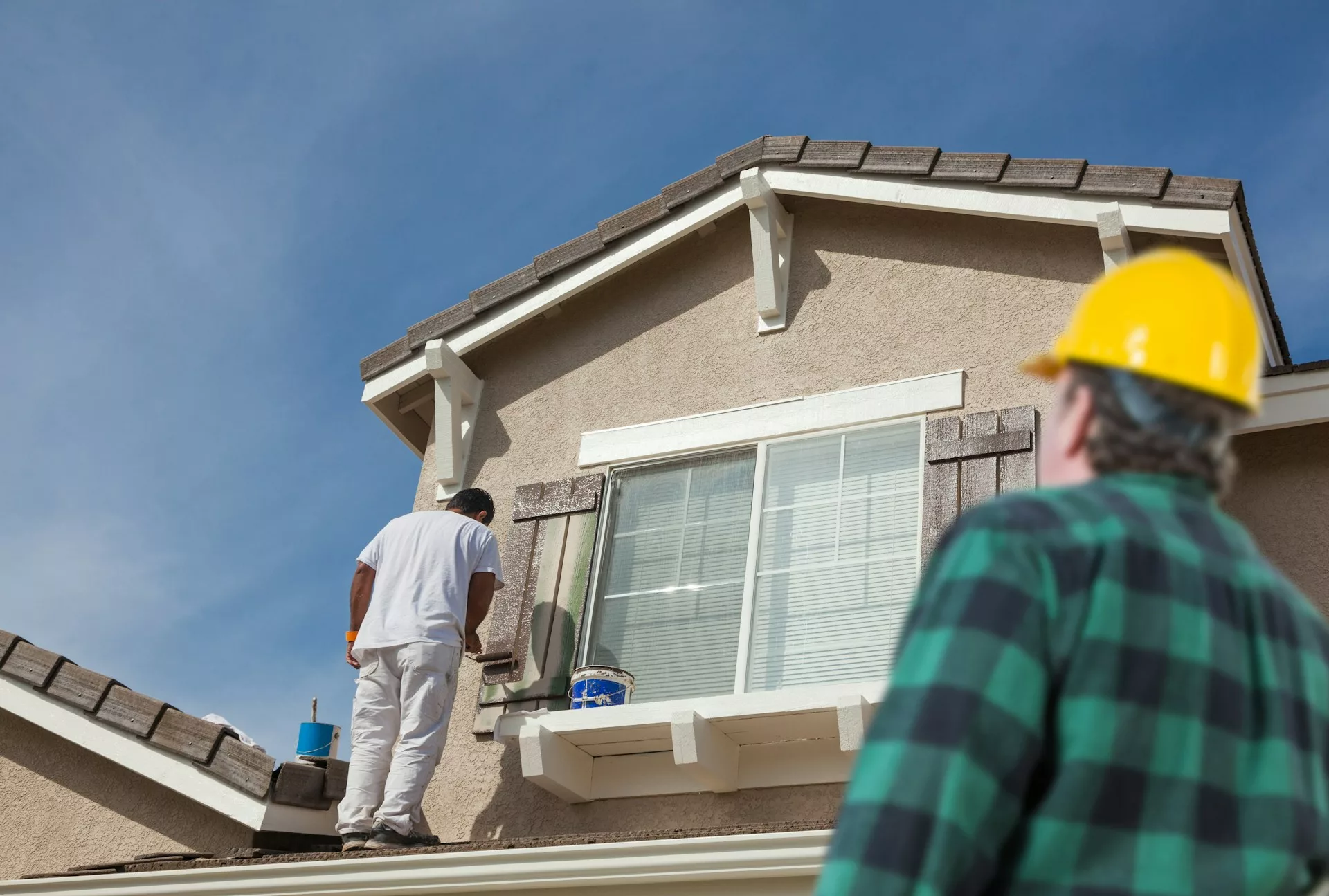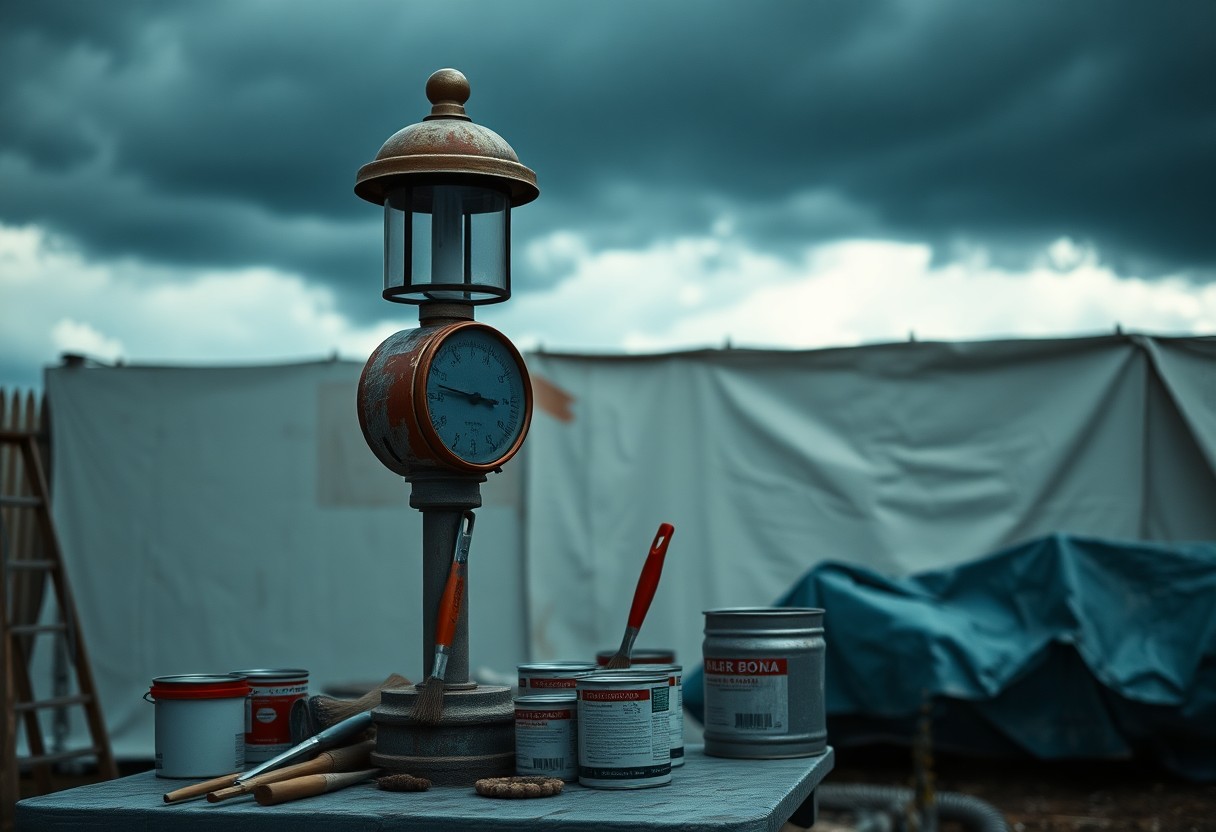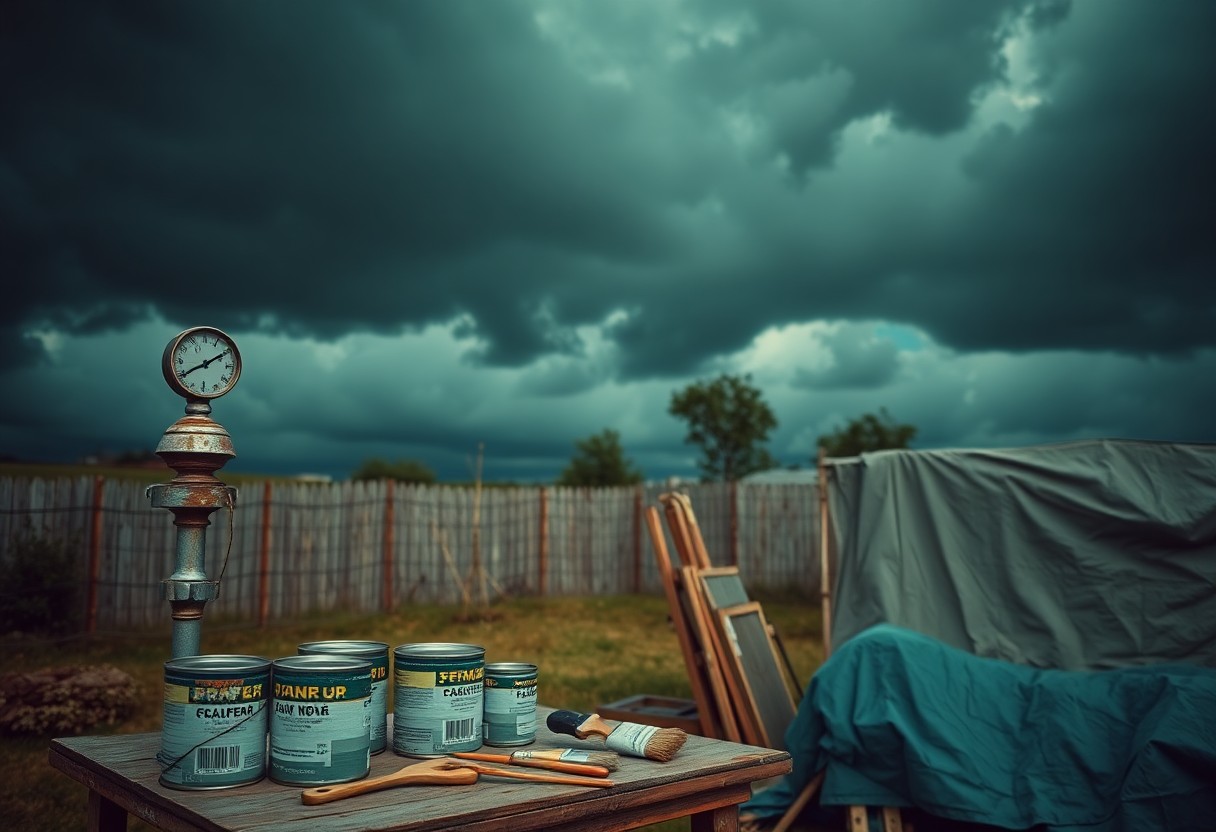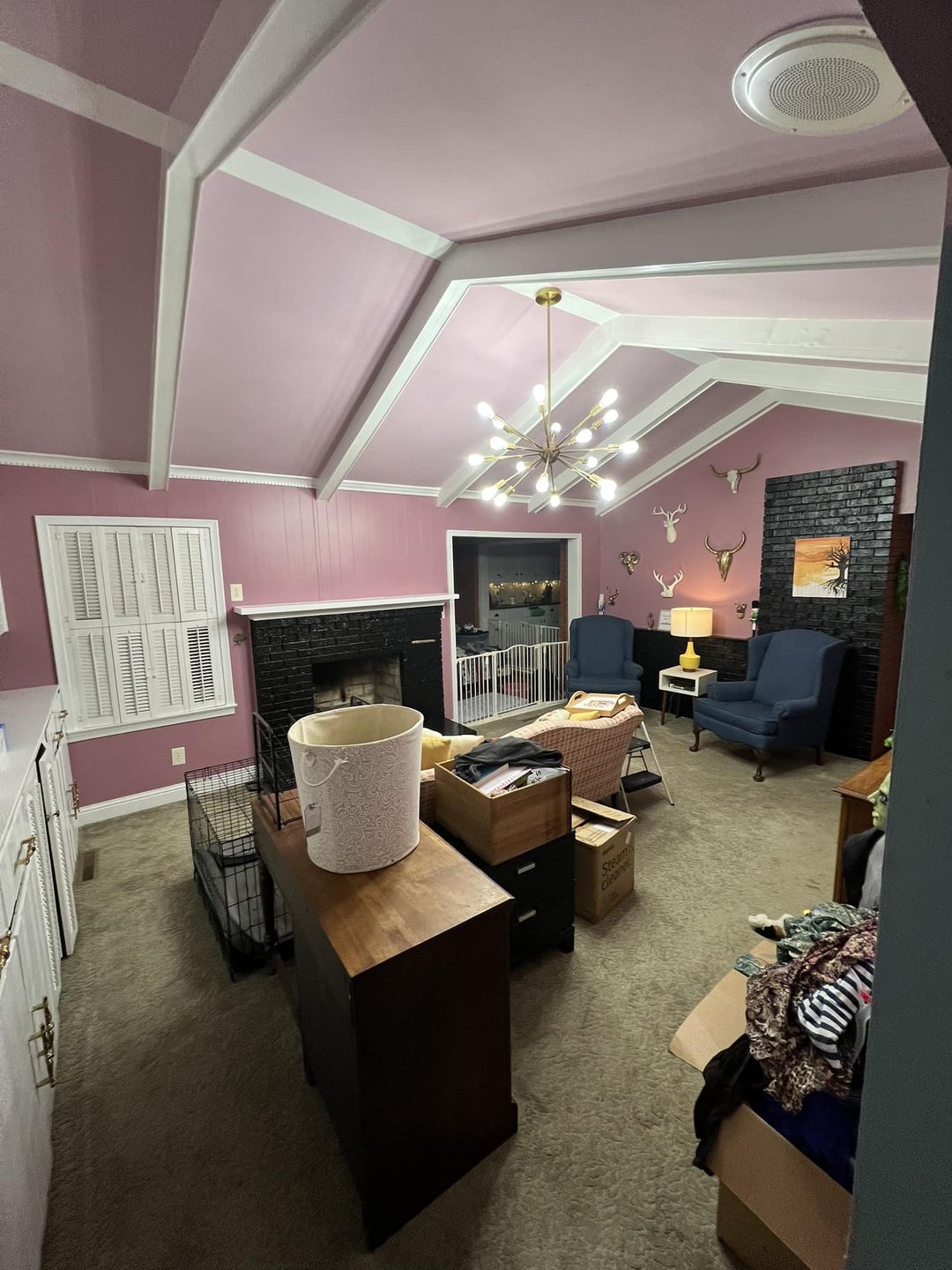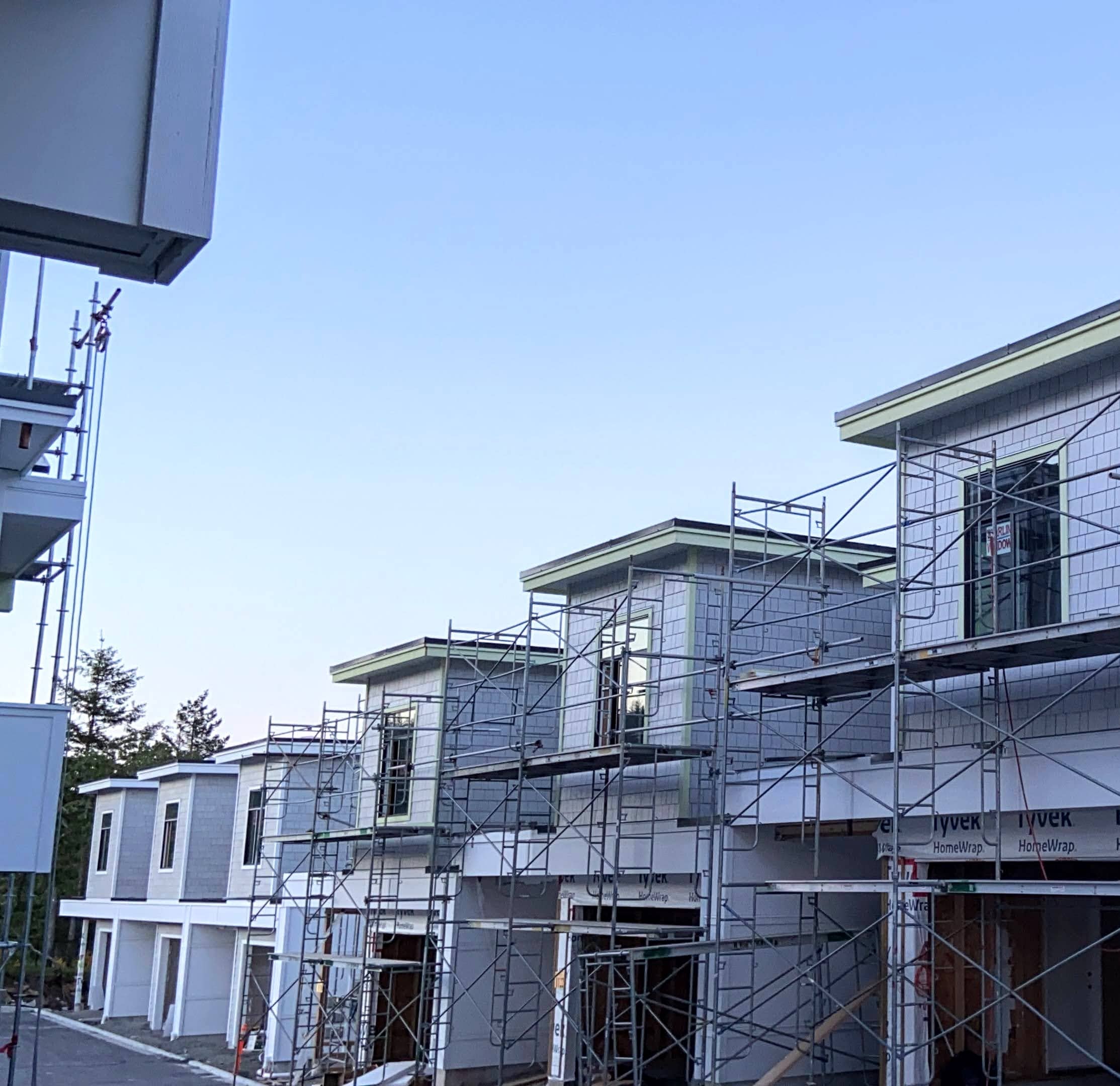April and May in Victoria BC can be tricky months for exterior painting. One minute it can be 20 degrees and sunny, and the next minute it can begrey and raining.
You want to avoid major setbacks and ensure your hard work doesn’t wash away. Understanding weather forecasts and timing your painting can save you from dealing with blisters, peeling paint, or worse—a complete redo.
So, let’s explore what you need to do so that you don’t get caught out in the rain!
Key Takeaways:
- Weather Forecast: Always check the local weather forecast for rain predictions before starting your painting project to ensure optimal conditions.
- Drying Time: Understand that paint needs adequate time to dry before rain hits; typically, it should be dry to the touch and cured for several hours to a day depending on the product.
- Humidity Levels: Keep an eye on humidity levels, as high humidity can also affect paint adhesion and drying, much like rain.
- Protective Measures: Consider using tarps or temporary coverings to shield painted surfaces from unexpected rain during the painting process. (Not common but still practical)
- Surface Preparation: Ensure that surfaces are properly cleaned and prepped; moisture on the surface can lead to poor paint adherence, especially if rain occurs shortly after application.
Understanding Weather Patterns
Using weather apps to monitor your local weather is a perfect way to help prepare for rain and maximize your exterior painting production. You want to ensure that rain doesn’t ruin your hard work or delay your timeline. Keep an eye on temperature and humidity – these factors can impact paint adhesion and drying time. Always check the forecast before diving in!
Analyzing Rain Forecasts
Around your painting days, you need to dig deep into the weather forecasts. Don’t just glance at the app; get in there and look at hourly trends and radar maps.
Look for storm patterns that could sweep in unexpectedly. You want to plan your painting schedule around these forecasts to avoid getting caught in the rain!
Tip – If you live near Dallas Rd in Victoria, BC we always check Port Angeles WA location. It gives a more accurate weather forecast for the Fairfield and Oak Bay areas.
Ideal Painting Conditions
Aim for mild temperatures and low humidity. Ideally, you want the temperature between 10°C and 30°C with humidity levels below 70%.
This ensures that your paint applies evenly and dries properly. A sunny day is fantastic, but don’t go overboard; too much heat can dry paint too quickly, causing issues.
Further, being aware of ideal painting conditions can set your project up for success. There’s almost always a soft, mild breeze throughout Victoria that helps with dry time, but avoid painting when it’s windy as this can lead to uneven application.
If you can, paint in the early morning or late afternoon, when temperatures are just right and there’s less intense sunlight.
Prioritizing these factors can mean the difference between a solid, long-lasting paint job and a disaster waiting to happen. Make sure you set yourself up for an easy, smooth experience!
Timing Your Project
One of the biggest game-changers for your exterior painting project is timing.
You need to align your work with the weather conditions around you. A strategic start time can make all the difference between a flawless finish and a nightmare of peeling paint.
Be ready to seize those sunny days! (But if your exterior painting project is too big for you you, or you’d rather take the weekend to camp with your family, call us today. We’ll be happy to take away the stress!)
Seasonal Considerations
Victoria’s seasons bring their own weather patterns, and these directly affect your paint job. Summer might seem ideal, but the heat can wreak havoc. You’ve got to operate smart!
Summer might seem like the perfect time to start painting, but if your area is known for high humidity, this can lead to slow drying times and even early mold growth on your freshly applied paint.
Fall can be picture-perfect with those crisp and dry days, but make sure your work is wrapped up before winter sets in. That’s when temperatures drop, and moisture levels rise—two things that create an absolute disaster for your project!
Prep Work Before the Rain
All exterior painting projects demand smart prep work, especially when rain is on the horizon.
Keep your surfaces clean, dry, and free from damage so that the paint adheres effectively and lasts longer. This proactive approach can save you time and money in the long run.
Surface Preparation Tips
One of the keys to successful exterior painting lies in proper surface preparation. Start by inspecting your area for any imperfections, such as peeling paint or cracks, and take the time to address these issues. That’s what we do!
- Clean surfaces with soap and water.
- Use a wire brush for peeling paint.
- Fill any cracks or holes with suitable filler.
- Sand surfaces for smoothness.
- Always allow adequate drying time.
Recognizing the importance of these steps will ultimately lead to a more durable paint job.
Choosing the Right Paint
Before you start your painting project, consider the type of paint you’re using. Because not all paints are created equal, especially when it comes to resisting moisture.
Look for paints that feature water-resistant properties and fast-drying formulas to minimize the impact of unexpected rain. This thoughtful choice will provide better protection for your surfaces.
Even if you’re eager to start painting, it’s all about making the right decisions upfront.
Investing in high-quality paint with durable finishes can mean the difference between a project that looks phenomenal for years and one that needs constant touch-ups.
Choose products designed for exterior conditions; they offer benefits like UV resistance and mildew protection. Trust us, you’ll thank yourself later when your work stands the test of time!
Protecting Your Work
When rain is in the forecast, it’s vital to have a plan in place to shield your freshly painted areas from water damage.
Covering Finished Areas
Use drop cloths or other protective materials to block moisture from attacking your paint job. This simple step can be the difference between a vibrant finish and a ruined project.
Using Tarps and Plastic Sheeting
Investing in high-quality tarps and plastic sheeting can be costly, but they’re needed if you’re doing exterior painting. They are lightweight, waterproof, and easy to handle, allowing you to secure them quickly over your painted areas.
The Impact of Humidity
Keep an eye on humidity levels before you start your exterior painting project. High humidity can slow down the drying process and mess with the adhesion of the paint, which means your hard work won’t show up the way you want it to.
How Moisture Affects Paint
Along with humidity, moisture can be a total game-changer for your paint job. When surfaces are damp, paint can struggle to stick, resulting in a poor finish and reduced durability.
It’s like trying to run a race in flip-flops—not the best idea! Understanding this can help you avoid major pitfalls.
Tackling High Humidity Levels
Make sure the surfaces are completely dry and free from algae. Ventilation is key here, so keep things open and airy.
But you also should keep in mind that certain paints are formulated to work better in high humidity—they actually bond well and help prevent issues. If you feel the humidity rising, you might want to opt for high-quality, mildew-resistant paint.
Always check the manufacturer’s recommendations regarding temperature and humidity levels, because applying paint under the wrong conditions can lead to disasters like bubbling and peeling.
If you have blistering or bubbles on your paint job, call us and we can help you get to the solution.
Post-Rain Considerations
It’s crucial to understand how the weather has impacted your painting project, especially the surfaces you plan to paint.
Whether it’s lingering moisture or a potential shift in temperature, taking the time to evaluate your exterior could save you from costly mistakes down the line.
Evaluating Damage
Considerations for evaluating your property’s condition after rain involve examining for noticeable damage like peeling paint, bubbling, or mold growth. These indicators can dictate whether you can proceed with your plans or if you need to take extra precautions. A quick inspection could potentially save you time and money in the long run.
Knowing When to Repaint
On the flip side, knowing when to repaint relies heavily on understanding the lifecycle of your current paint job and the weather’s effect on it. If you notice fading, meandering cracks, or even significant wear after heavy rain, it might be time to level up your plan.
PostRain, the signals are there if you look closely. If your paint is exhibiting signs of moisture damage, fading, or cracking, it’s not just a cosmetic issue. You’re facing potential issues that could lead to bigger problems if you don’t address them. So, when you see those red flags, be proactive. If your exterior is telling you it needs some love, don’t hesitate! A fresh coat now can save you from expensive repairs in the future.
FAQ
Q: Why is it important to check the weather forecast before starting an exterior painting project?
A: Checking the weather forecast is vital because rain can significantly affect the drying time and adhesion of paint. If rain is expected shortly after you paint, it can wash away wet paint or cause it to blister, leading to poor finish and requiring you to repaint. Monitoring the local forecast will help you select the best time for your project.
Q: How much time should I allow for paint to dry before rain is predicted?
A: The drying time for paint can vary depending on the type of paint, temperature, humidity, and surface conditions. Generally, water-based paints may take around 1-2 hours to become dry to the touch and up to 24 hours to cure adequately under optimal conditions. However, if rain is forecast within the next few hours, it is advisable to wait until the conditions are more favorable.
Q: What preparations can be made to protect painted surfaces from rain?
A: To protect newly painted surfaces, it’s possible to set up temporary coverings like tarps or plastic sheeting to shield them from unexpected rain showers. Additionally, consider using paint with rain-resistant properties, which can withstand light rain shortly after application. Ensuring proper ventilation and airflow during the drying process will also enhance drying times, making it less likely for rain to affect the freshly painted surfaces.
Q: What should I do if I anticipate unexpected rain during my painting process?
A: If rain is anticipated, stop painting and quickly cover the unfinished areas with a tarp or plastic sheet to help shield them from moisture. If it has started to rain after you’ve applied paint, move any paint supplies and equipment indoors. Assess the areas that may have been impacted and wait for the paint to dry thoroughly before touching up or proceeding when conditions improve.
Q: How does humidity affect exterior painting projects and the risk of rain?
A: High humidity can slow down the drying process of paint, increasing the likelihood of issues like bubbling, blistering, or poor adhesion if rain occurs soon after. Ideally, aim to paint when humidity is below 70% to ensure that the paint cures effectively. Monitoring humidity levels, in conjunction with the weather forecast, will help you plan your exterior painting to minimize risks associated with rain and moisture.

